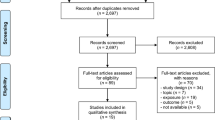Abstract
A growing number of studies have shown that impaired visibility caused by particulate matter pollution influences emotional wellbeing. However, evidence is still scant on how this effect varies across individuals and over repetitive visual exposure in a controlled environment. Herein, we designed a lab-based experiment (41 subjects, 6 blocks) where participants were presented with real-scene images of 12 different PM2.5 concentrations in each block. Emotional valence (negative to positive) and arousal (calm to excited) were self-rated by participants per image, and the response time for each rating was recorded. We find that as pollution level increases from 10 to 260 µg/m3, valence scores decrease, whereas arousal scores decline first and then bounce back, following a U-shaped trend. When air quality deteriorates, individual variability decreases in hedonic valence but increases in arousal. Over blocks, repetitive visual exposure increases valence at a moderate pollution level but aggravates negative emotions in severely polluted conditions (> 150 µg/m3). Finally, we find females, people who are slow in making responses, and those who are highly aroused by clean air tend to express more negative responses (so-called negativity bias) to ambient pollution than their respective counterparts. These results provide deeper insights into individual-level emotional responses to dirty air in a controlled environment. Although the findings in our pilot study should only be directly applied to the conditions assessed herein, we introduce a framework that can be replicated in different regions to assess the impact of air pollution on local emotional wellbeing.

Similar content being viewed by others
References
Baccarelli A, Barretta F, Dou C, Zhang X, McCracken J P, Díaz A, Bertazzi P A, Schwartz J, Wang S, Hou L (2011). Effects of particulate air pollution on blood pressure in a highly exposed population in Beijing, China: a repeated-measure study. Environmental Health, 10(1): 108
Bertram C, Rehdanz K (2015). The role of urban green space for human well-being. Ecological Economics, 120: 139–152
Bradley M M, Lang P J (1994). Measuring emotion: the self-assessment manikin and the semantic differential. Journal of Behavior Therapy and Experimental Psychiatry, 25(1): 49–59
Burki T (2021). WHO introduces ambitious new air quality guidelines. Lancet, 398(10306): 1117
Caplin A, Ghandehari M, Lim C, Glimcher P, Thurston G (2019). Advancing environmental exposure assessment science to benefit society. Nature Communications, 10(1): 1236
Chapman D A, Corner A, Webster R, Markowitz E M (2016). Climate visuals: A mixed methods investigation of public perceptions of climate images in three countries. Global Environmental Change, 41: 172–182
Do K, Yu H, Velasquez J, Grell-Brisk M, Smith H, Ivey C E (2021). A data-driven approach for characterizing community scale air pollution exposure disparities in inland Southern California. Journal of Aerosol Science, 152: 105704
Dong R, Fisman R, Wang Y, Xu N (2021). Air pollution, affect, and forecasting bias: evidence from Chinese financial analysts. Journal of Financial Economics, 139(3): 971–984
Ferreira S, Akay A, Brereton F, Cuñado J, Martinsson P, Moro M, Ningal T F (2013). Life satisfaction and air quality in Europe. Ecological Economics, 88: 1–10
Fredrickson B L, Kahneman D (1993). Duration neglect in retrospective evaluations of affective episodes. Journal of Personality and Social Psychology, 65(1): 45–55
Gao X, Coull B, Lin X, Vokonas P, Spiro A 3rd, Hou L, Schwartz J, Baccarelli A A (2021). Short-term air pollution, cognitive performance, and nonsteroidal anti-inflammatory drug use in the Veterans Affairs normative aging study. Nature Aging, 1(5): 430–437
Hammitt J K, Zhou Y (2006). The economic value of air-pollution-related health risks in China: a contingent valuation study. Environmental and Resource Economics, 33(3): 399–423
Hansstein F V, Echegaray F (2018). Exploring motivations behind pollution-mask use in a sample of young adults in urban China. Globalization and Health, 14(1): 122
Houben M, Van Den Noortgate W, Kuppens P (2015). The relation between short-term emotion dynamics and psychological well-being: a meta-analysis. Psychological Bulletin, 141(4): 901–930
Huang J L, Liu M, Bowling N A (2015). Insufficient effort responding: examining an insidious confound in survey data. Journal of Applied Psychology, 100(3): 828–845
Jacobs N, Roman N, Pless R (2007). Consistent Temporal Variations in Many Outdoor Scenes, 1–6
Jenkins-Smith H C, Ripberger J T, Silva C L, Carlson D E, Gupta K, Carlson N, Ter-Mkrtchyan A, Dunlap R E (2020). Partisan asymmetry in temporal stability of climate change beliefs. Nature Climate Change, 10(4): 322–328
Joshanloo M (2019). Investigating the relationships between subjective well-being and psychological well-being over two decades. Emotion (Washington, DC), 19(1): 183–187
Lal R M, Das K, Fan Y, Barkjohn K K, Botchwey N, Ramaswami A, Russell A G (2020). Connecting air quality with emotional well-being and neighborhood infrastructure in a US City. Environmental Health Insights, 14: 1–11
Lang P J, Bradley M M (2010). Emotion and the motivational brain. Biological Psychology, 84(3): 437–450
Lehman B, Thompson J, Davis S, Carlson J M (2019). Affective images of climate change. Frontiers in Psychology, 10(960): 1–10
Levinson A (2012). Valuing public goods using happiness data: the case of air quality. Journal of Public Economics, 96(9–10): 869–880
Li Y, Guan D, Tao S, Wang X, He K (2018). A review of air pollution impact on subjective well-being: survey versus visual psychophysics. Journal of Cleaner Production, 184: 959–968
Li Y, Guan D, Yu Y, Westland S, Wang D, Meng J, Wang X, He K, Tao S (2019). A psychophysical measurement on subjective well-being and air pollution. Nature Communications, 10(1): 5473
Liu M, Bi J, Yang J, Qu S, Wang J (2021). Social media never shake the role of trust building in relieving public risk perception. Journal of Cleaner Production, 282: 124442
Marfori M T, Campbell S L, Garvey K, McKeown S, Veitch M, Wheeler A J, Borchers-Arriagada N, Johnston F H (2020). Public health messaging during extreme smoke events: Are we hitting the mark? Frontiers in Public Health, 8: 465
Menz T (2011). Do people habituate to air pollution? Evidence from international life satisfaction data. Ecological Economics, 71: 211–219
Murray C J L, Aravkin A Y, Zheng P, Abbafati C, Abbas K M, Abbasi-Kangevari M, Abd-Allah F, Abdelalim A, Abdollahi M, Abdollahpour I, et al., and the GBD 2019 Risk Factors Collaborators (2020). Global burden of 87 risk factors in 204 countries and territories, 1990–2019: a systematic analysis for the Global burden of disease study 2019. Lancet, 396(10258): 1223–1249
Résibois M, Rotgé J Y, Delaveau P, Kuppens P, Van Mechelen I, Fossati P, Verduyn P (2018). The impact of self-distancing on emotion explosiveness and accumulation: an fMRI study. PLoS One, 13(11): e0206889
Seo M G, Barrett L F (2007). Being emotional during decision making—Good or bad? An empirical investigation. Academy of Management Journal, 50(4): 923–940
Song H, Schwarz N (2009). If it’s difficult to pronounce, it must be risky. Psychological Science, 20(2): 135–138
Yan T, Tourangeau R (2008). Fast times and easy questions: the effects of age, experience and question complexity on web survey response times. Applied Cognitive Psychology, 22(1): 51–68
Zhang J, Mu Q (2018). Air pollution and defensive expenditures: evidence from particulate-filtering facemasks. Journal of Environmental Economics and Management, 92: 517–536
Zhang X, Chen X, Zhang X (2018). The impact of exposure to air pollution on cognitive performance. Proceedings of the National Academy of Sciences of the United States of America, 115(37): 9193–9197
Zhu Z, Zhao Y (2021). Severe air pollution and psychological distress in China: the interactive effects of coping and perceived controllability. Frontiers in Psychology, 12: 601964
Acknowledgements
The study was financially supported by the National Natural Science Foundation of China (Nos. 71921003 and 72174084). The authors declare no competing financial interests.
Author information
Authors and Affiliations
Corresponding authors
Additional information
Highlights
• Emotional responses to visibility-reducing haze was assessed in a controlled lab.
• Valence and arousal have non-linear responses to pollution-caused low visibility.
• Repetitive exposure aggravates negative emotions in severely polluted conditions.
• Emotional bias to pollution relates with gender, decisiveness, attitude to clean air.
Supplementary Information
11783_2023_1620_MOESM1_ESM.pdf
Same stimuli, different responses: a pilot study assessing air pollution visibility impacts on emotional well-being in a controlled environment
Rights and permissions
About this article
Cite this article
Yang, J., Gao, Q., Liu, M. et al. Same stimuli, different responses: a pilot study assessing air pollution visibility impacts on emotional well-being in a controlled environment. Front. Environ. Sci. Eng. 17, 20 (2023). https://doi.org/10.1007/s11783-023-1620-5
Received:
Revised:
Accepted:
Published:
DOI: https://doi.org/10.1007/s11783-023-1620-5




